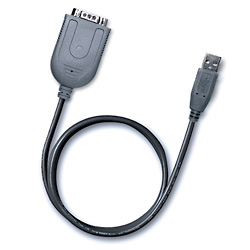Have you ever been in the saturation that your Linux server is using a lot of network bandwidth, but it’s a guesswork to find the process using it all?
I just stumbled upon this tool, it’s not a new tools, but it’s extremely useful!
Let’s say you have a server running apache, mysql, ftp, btsync and a lot of other network services. and somehow that server is using up 100Mbit constantly. You want to find out what it is but only got tools like iftop, atop, iptraf and others which are all great tools, but they only show which connections are using the network bandwidth.
Continue reading
Tag Archives: network

Get all new dhcp leases, but only the new leases since last check in bash
I needed to make a bash script for work that got the ip address of all new leases in the dhcp server, but only the new ones.
I spend some time looking for something useful, and therefore I decided to write a short post here to help others since i had a hard time finding it (maybe my google-fu is not as good as it should be)
The script had to do the following:
1. Get all new lines from a log file since last run
2. Get the ip addresses of the new leases
3. Do some stuff with the new ip addresses. This will not be part of this post
4. Run every minute in cron. This will also not be part of this post
In this post I will only cover how i did 1 and 2.
Continue reading

Find all HP ILO interfaces on a subnet in Linux
By default, HP’s ILO interfaces are set to DHCP.
Yes you could go into your router to see which DHCP lease it got, but here is a much more easy solution that you can use anywhere, even though you don’t have access to the router/DHCP server.
Requirements
You don’t need much. What you need on your Linux computer for this to work is:
- sudo (You only need this if you are not logged in as root)
- nmap

Realtek network cards and VMware ESXi 5.5
Yesterday I decided to upgrade my two ESXi servers from ESXi 5.1 to ESXi 5.5 since the update came out some time ago.
The upgrade from ESXi 5.0 to ESXi 5.1 went great, without any problems. But this time, that is not the case.
My two ESXi servers are white boxes made of the following hardware:
- Motherboard: MSI Z87-G43 (http://www.msi.com/product/mb/Z87-G43.html)
- CPU: i5-4670K (http://ark.intel.com/products/75048/)
- RAM: Kingston HyperX DDR3 1600MHz, 8Gb * 2(16GB total) (http://www.newegg.com/Product/Product.aspx?Item=N82E16820104173)
The problem was the motherboard that ships with an onboard Realtek 8111E network adapter.
This problem has been verified to be the same with Realtek 8168 and Realtek 8169.
The reason for this, is that VMware removed the drivers from the new ESXi 5.5 iso.
In this post I will show you how to get ESXi 5.5 working with the Realtek network adapters.
Continue reading

D-link DP-101 or other print server IP reset
So you found an old D-link DP-101 or other printer server that you need to use, but don’t know what static IP address you gave it years ago?
The solution is simple.
This also on other D-link print server models, if you did this on models that are not listed below, please leave a comment so i can add them.
Verified to work with:
- DP-101
- DP-101P+
- DP-300U
The D-link Dp-101 is a stable parallel to network print server, but it does not have the feature of a “Reset to default settings” hardware button anywhere. If you want to reset the device to default, or change the IP address without knowing what it is now, you have to do it with D-link’s tool, and it only works on 32Bit computers!
Here is how you do it, with link to the software
Continue reading
D-link DGS-3324SR management IP address configuration
This is a quick post on how to configure the management IP address on a D-link switch. Mine was a DGS3324SR but i bet it’s the same on all D-link managed rack switches.
Continue reading

Belkin F5U103V serial to USB converter on Windows 7 64Bit
Update: I have not tested this on Windows 8, but it should work. If anyone does this on Windows 8 (i don’t have a Windows 8 machine laying around), please leave a comment to verify if it works or not.
Yes, this post is about Windows!
I had a problem yesterday, and thought I should post my solution since I had a hard time getting it to work and it might help others.
I have a D-link DGS-3324SR rack switch for my servers, and it had some random IP address on the configuration interface that I was not able to find, and I needed to get into the switch to configure some vlans.
I thought “That’s easy, just connect to the console port and thats it”, but then i came home to notice that none of my computers have a serial (RS323) port!
I then found a serial (RS323) to USB converter at work, the Belkin F5U103V and borrowed it for the day, but when i got home and plugged it into a Windows 7 64Bit laptop I noticed that there was no driver found for the device.
Continue reading

Temperature measuring using Linux and Raspberry Pi
The story
I have a small server room, with some rack servers, NAS’s, VMware ESXi’s and other fun stuff, but I had one problems.. in the summer it got really hot, and I had to open the window to let fresh air in, and the old out to lower the temperature again, but I never knew when it was too hot, so i had to drive by the server room once or twice a day to manually feel if it was too hot..
This was a problem, because sometimes I was not home, or sometimes I forgot, or just had no time to drive by to check the temp.
Having a temperature sensor in the room, from a freezer or something like that didn’t help me much, since I still had to drive by to check it manually.
So I had to make something I was able to get the room temperature from, over the internet/lan, and thats when I decided to make my network thermometer.
I looked for weeks on the internet for a good guide about this, but none of them worked. so I decided to write my own to help others with the same problem out.
This post will be about
How to make your own network thermometer, using open source software and a cheap USB temperature sensor!
Continue reading